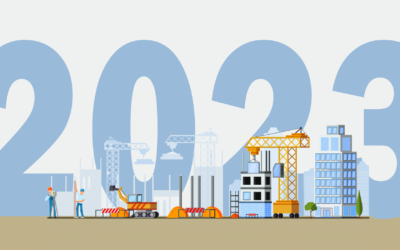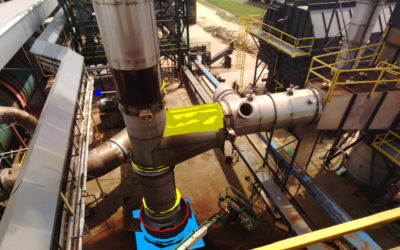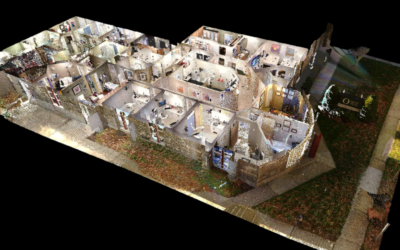Innovation in a Time of Crisis: How Construction Is Responding to COVID-19
This article was published in the Construction Executive
A recent survey published by EY found that only 28% of construction and engineering companies have a successful digital strategy. This does not come as a surprise as the construction industry has historically been slow to adopt new technologies. COVID-19 has changed that.
The carpet has been pulled out from under many as the standard mode of operations is no longer feasible. It has been said that necessity is the mother of invention and as COVID-19 continues to disrupt construction, companies have continued to prove their resiliency through onsite and offsite innovation and quick adaptation to change.
INNOVATIONS ONSITE
Amid the health crisis, construction leads have been forced to think differently about the way projects are run to keep people safe and healthy. In response to the social distancing mandates, construction safety software provider Smartvid.io released a new feature to its AI application Vinnie. The app is used to monitor site risk in terms of safety, productivity and quality, and now Vinnie will also monitor social distancing practices. CEO Josh Kanner says that this new feature is using real-time updates to indicate if workers are too close in proximity to one another as a way of preventing the spread of COVID-19.

Triax Technologies‘ Proximity Trace is worn on a hard hat or lanyard and lets workers know when they are too close. In the event of a confirmed case of COVID-19, companies can trace data captured by the worker’s device to identify who might have been exposed.
Remote field coordination
These social distancing mandates have also put pressure on general contractors and project managers to limit construction site head-count. As a result, DJM increased its availability of 3D scanning services for site verification. Depending on the site, verifying as-built conditions for a project can take multiple technicians a few days. With a laser scanner, one technician can map out an entire construction site in a matter of hours, making the social distancing guidelines easier to follow.
As the number of team members allowed on site has been reduced due to COVID-19, site managers are also looking for ways to maximize field team productivity. To help in this, construction site management platform Riskcast has been offering free 90-day access. The platform displays how skilled tradesmen are spending their time onsite, making it easy for leads to see their production quantities and equipment usage. Leads can take this information and strategize how to streamline operations and use their time more efficiently.
IN THE OFFICE
This extenuating circumstance has brought about technological change in construction offices as well. Since businesses can no longer function out of their buildings, many have enabled employees to work from home, actively seeking ways to digitally transform their operations to keep their office staff employed.
Shifting to remote everything
Since team members can no longer walk across the room and discuss project plans, there has been a substantial increase in software collaboration tool adoption across the construction sector. Teams are connecting with tools like Wrike and Slack, and have adopted teleconferencing services such as Zoom.
This shift has also caused construction companies bound by paper documents to be introduced to the power of the cloud. Tools like Microsoft OneDrive, Google Drive and Dropbox are now in wide use across the sector.
New tools
Those who find working remotely difficult and miss the office feel have experimented with new ways to keep in touch. Services like Sococo and Wurkr allow team members to virtually work side by side from home and even enter into virtual conference rooms where they can hold meetings.

Since in-person meetings can no longer take place, AECOM has found a new way to host them. The infrastructure firm has created a new public consultation tool where stakeholders can visualize projects with virtual reality, interactive videos and maps of the project plans. It also simulates an in-person feel by allowing for instant feedback and questions.
While this forced digital transformation has been out of necessity, it is likely here to say. This chaotic transition has introduced many to the powerful tools available today. A large number of construction companies that were behind the times have been brought into the 21st century with seamless and instant cloud collaboration.
CONSTRUCTION FIGHTS BACK
Construction is one of the oldest industries and it is inspiring to see not only how construction stakeholders are innovating in this time of crisis, but also how they are fighting back. In March as the number of COVID-19 cases in New York City rose, the U.S. Army Corps of Engineers worked to retrofit hotels and dormitories into temporary hospitals by simplifying and standardizing the designs. The modular community is also jumping into the fray to see how they can create space for the sick.
How the industry is responding to Covid
Industry heavy hitters aren’t the only ones who are working to stop the spread of COVID-19 either. Construction companies across the nation small and large are coming together to support healthcare workers in whatever way they can. DJM, which provides 3D printing and building modeling services, has produced more than 800 sterilized face shields. An Indiana contractor is creating and fabricating plexiglass panels for hospitals to give medical staff additional protection, while a contractor in Utah is creating mobile triage units and test labs to help stop the spread of COVID-19.
Terex is 3D printing parts for face shields. Working with the Lake Area Technical Institute Electronic Systems Technology and Robotics departments, about 800 face shields and 100 masks have been distributed to health care providers in South Dakota and Minnesota. Terex’s Genie team designed a face shield that goes over the N95 masks and expects to produce 4,000 to 5,000 of them. In addition, they are manufacturing face coverings using material provided by a hospital.
Staying strong through the pandemic
All these stories are a testament to the strength of the human spirit in these trying times. In a recent interview with BIM+ Buildots Roy Danon reflected: “Times of crisis often lead to creative breakthroughs and advancements, as people are forced to think differently and adopt new ways of doing the same things they have been undertaking for a long time.”
While COVID-19 has disrupted almost everything in our lives and businesses, the way forward is through innovation.
DJM’s offers Face Shields. 100% Made in the USA.


